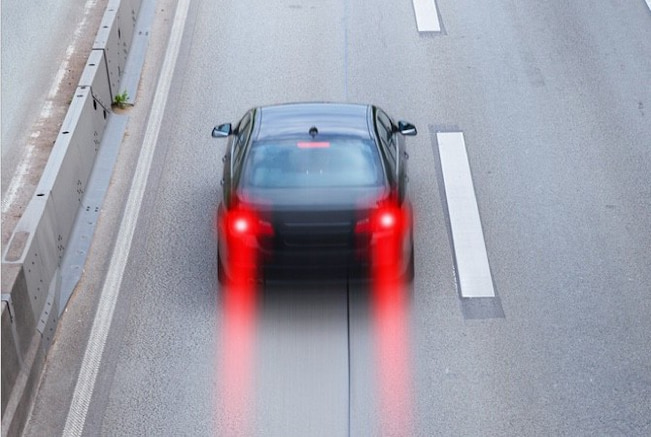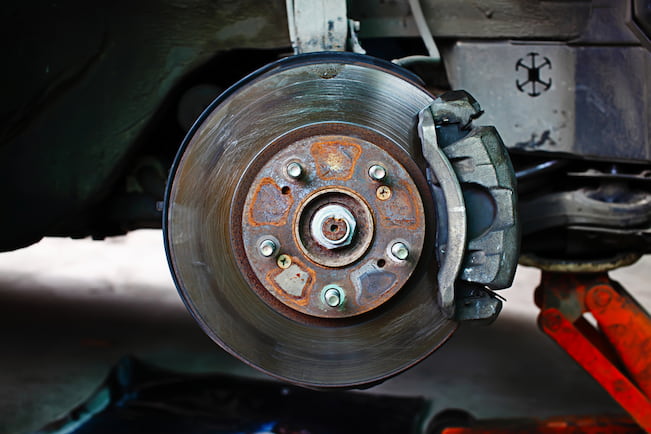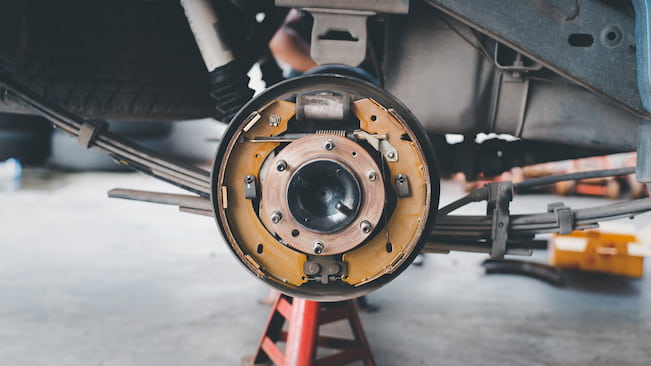Brakes are the necessary car component that slows the vehicle down and brings it to a safe stop. If you’ve skipped the regular maintenance intervals to check up on the working condition of the different brake parts, chances are the stopping ability of your vehicle is compromised. You might notice changes in the brake pedal, weird squealing or grinding noises and odd smells, the car pulling to the side, and longer than usual braking distances. The definite giveaway that something is wrong is the brake warning light on the dash. If you’ve made it this far, time to check your car brakes and replace any faulty parts.

How Brakes Work
There’s more to brakes than just pressing the brake pedal and the car coming to a stop. The mechanical force of your foot on the pedal initiates a whole string of events. First, a piston compresses brake fluid inside the master cylinder and this generates hydraulic pressure which is transferred through the brake fluid lines to the braking assembly at each wheel. Here, wheel cylinders convert the pressure back into mechanical force, and the vehicle slows or stops with the aid of brake friction material pushed against a disc or drum.
What are Disc Brakes?
Disc brakes are the standard type of brakes seen in most cars today. To bring the wheels and car to a stop, disc brakes for car use a calliper inside of which are brake pads to create friction against a spinning disc or rotor.
Callipers can be seen as vices that clamp the discs and enable the pads to make contact. Callipers consist of one or more pistons located in bores and connected to the brake lines carrying the brake fluid. When pressing the brakes, the pressure from the brake fluid causes the piston to move and these push on the brake pads. Releasing the pedal causes the pistons to be pulled back into the bore by way of the return springs.

Rotors or discs spin together with the wheels (being attached to wheel hubs). They come into contact with the pads when braking. Most discs in production cars are made of cast iron or steel and cast iron composite. These provide adequate stopping power in everyday driving. For more performance, consider upgrading your factory disc to ceramic variants as these are more durable, handle higher heat levels, and are less prone to damage.
Brake pads are the parts that press against the disc. They have a metal backing and frictional material. This can be of different sorts, from organic, semi-metallic, or ceramic. Pads are also the car brake parts that get replaced the most. If they are worn down to the backing then not changing them out in time can cause damage to the rotors.
Additional parts include the master cylinder that pushes the brake fluid in either steel lines or rubber hoses and is aided by a brake booster unit to amplify the force that you as a driver use on the brake pedal.
What are Drum Brakes?
Drum brakes for car consist of wheel cylinders, brake shoes, and a drum. When the brake pedal is pressed, the pistons in the wheel cylinders force two curved brake shoes against the inner surface of a drum. The resulting friction slows and stops the rotation of the drum and the wheel, and the car comes to a stop. The force to activate the wheel cylinder pistons is the hydraulic pressure of the brake fluid making its way from the master cylinder through brake lines or hoses.
Disc vs Drum Brakes
Disc brakes have virtually replaced drums in most braking applications. They have less brake fade (the loss of friction necessary to stop the vehicle), manage heat much better, and have more consistent performance. They also perform better in wet conditions and with the help of additions like ABS are less likely to lock up under heavy braking. This is the reason why they’re preferred for braking at higher speeds.

Drum brakes are seen in heavier vehicles, and on the back axles of cheaper cars. They’re inexpensive to make but fall short in braking force, and parts will rust and degrade sooner than with discs. Additionally, they require more work and time during replacements.
Checking Up On Brake Parts
As mentioned, brake pads and brake shoes are the parts that do most of the work, and therefore the parts that fail first. Worn pads will mean longer braking distances and a cacophony of different noises, but they can also deform rotors to the point that you’ll be replacing both. The same applies to faulty brake shoes and drums.
Brake lines and master cylinders should be inspected for any cracks, corrosion, or leaks, as well as air buildup. Both issues will lead to loss of brake feel through the pedal and inconsistent performance. Also, make sure to replace the brake fluid at regular intervals. While rotors should last in normal driving, any damage such as pronounced or irregular scraping will mean they need to go. Lastly, check minor parts like seals and dust boots to ensure there is no loss of brake fluid and that excessive road debris, water, and dust don’t affect the work of the calliper pistons.
























